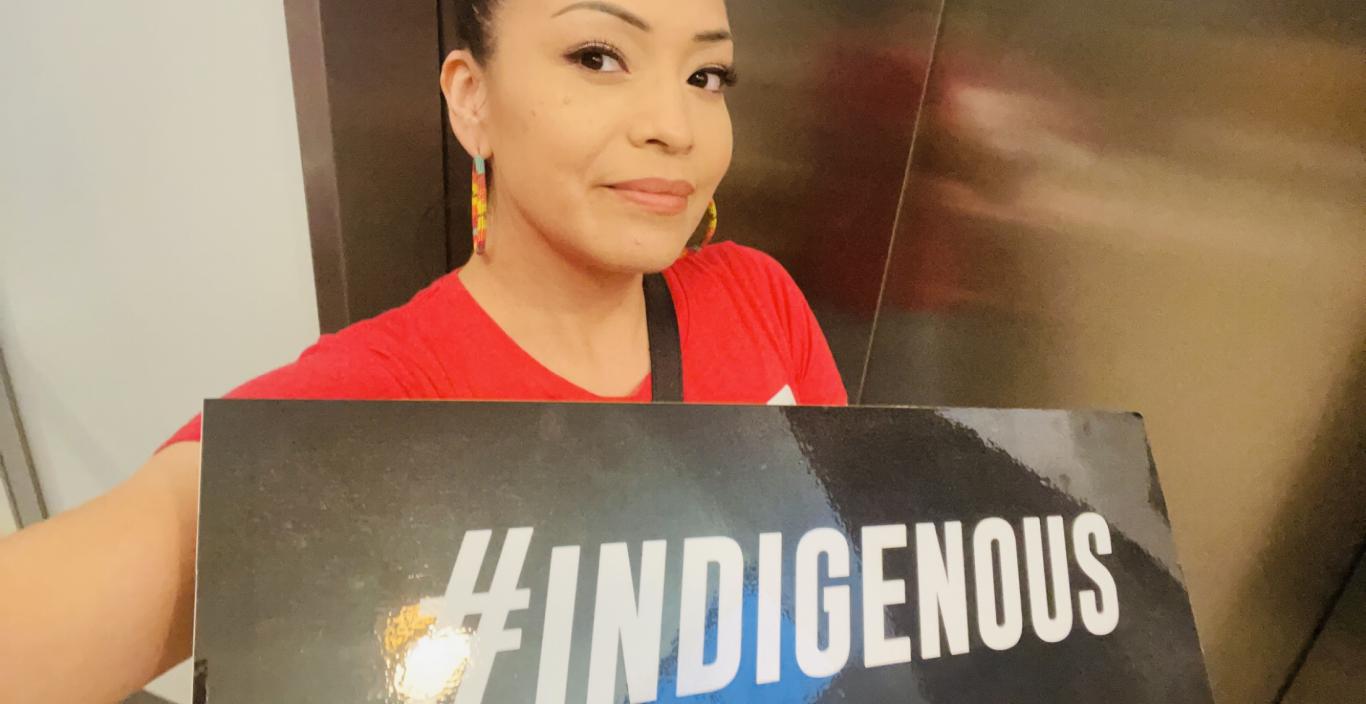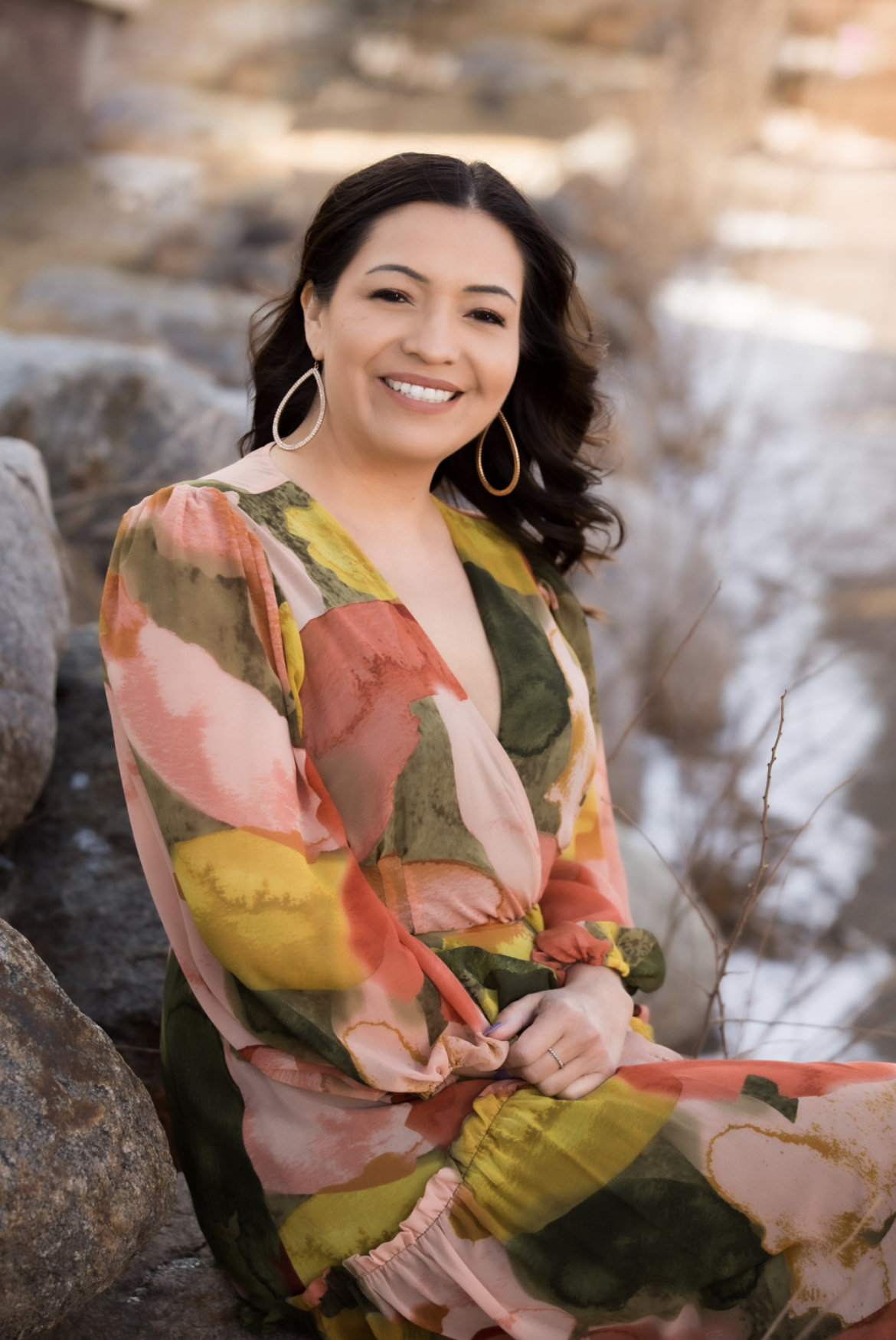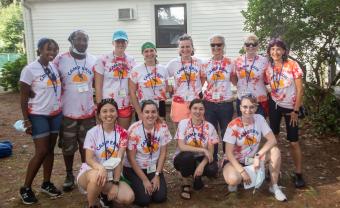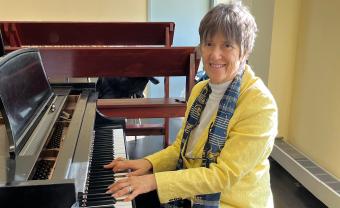Serene Thin Elk has always been drawn to people who were “helpers.”
A member of the Ihanktonwan Nation (Yankton Sioux Tribe), Serene grew up in Vermilion, South Dakota immersed in Lakota culture. She was also acutely aware of the impact of intergenerational and historical trauma within Native communities, including high rates of mental health issues and substance misuse. But she also observed how her extended family, or tiospaye came together to help each other.
“I was raised with a deep sense of community my whole life,” she says. “There was a lot of love and compassion in my home, and everything we went through, we went through together in this really deep way. If one person was hurting, we would all hurt and we’d try to figure out how to make things better.”
A master’s degree in Expressive Art Therapy from Lesley helped Serene combine her desire to help her community with her love of Native lifeways. Now, as the Chief Behavioral Health Officer at SD Urban Indian Health in Sioux Falls, South Dakota, and the co-founder of a non-profit, Generation Red Road, she’s using creative therapy techniques and Indigenous teachings to promote inter-generational healing and create a stronger, healthier community.
Finding paths to healing
As an undergraduate at the University of South Dakota, she met a lot of Native American psychologists and decided to pursue a degree in Psychology.
She also had a deep interest in the ways that people expressed their emotions through art, music, and language.
“I played the Siyotanka, the Lakota flute, and I remember thinking ‘how can I use this in the work that I want to do with people?’”
She began looking at music therapy programs and learning more about the broader field of expressive therapies that included visual art, drama, and more. After considering several different options, she decided to pursue her master’s degree at Lesley.
“There was something about Lesley that felt really grounded to me,” she recalls. And I met Karen Estrella, who is just amazing. I thought ‘I want to learn from people like her.’”
Being more than 1,500 miles from home was a challenge, but she developed close friendships with fellow students and thrived in the program, which encouraged a lot of self-reflection.
“You have to dig deep in a different way,” she says. “Lesley taught me skills, but it also was a time of growth and personal development for me.”
She was sometimes uncomfortable with the way that elements of Native American culture were used in the language of expressive therapies.
“There were some things that obviously no one else understood about being Indigenous,” she says. “So there were parts of the program that I struggled with, but I fought through them and talked to people like Karen.”
A family affair
At Serene’s community health practice, the staff refers to their patients as “relatives,” as a way of acknowledging their interconnectedness.
“It's important to refer to them as relatives, because that's what we are when I'm not in the office or in the clinic with them,” Serene says. “I'm a community member.”
As a therapist, she encourages her patients to access creative paths to express their emotions and find ways to grow and heal.
“We aren't really prompted to use our imaginations, especially as adults, to be creative in problem-solving and seeing how things could be different,” she says.
Serene draws hope from the resilience she sees in her patients and the potential for health and healing she sees in the revival of Native lifeways. Until the passage of the American Indian Religious Freedom Act in 1978, she explains, Native Americans were unable to legally practice sacred rituals and traditional lifeways, forcing them underground. Now, she says, many communities and families are committed to honoring and preserving these ways of life, language and culture.
“What stands out to me about our people is that even over hundreds of years of colonization, we've still kept many of our life ways,” she says. “And the things that have been healing for us are things that we’re now learning through science, are the most helpful for neurodevelopment and healing.”
The medicine wheel, also known as the Cangleska Wakan or Sacred Hoop, is a symbol used by many Native tribes to promote health and healing.
“The Medicine Wheel is one of the easiest and most accessible ways of teaching people about wellness and balance, because it has the four quadrants of the physical, emotional, spiritual and mental,” Serene explains.
While the concept of the Medicine Wheel is often expressed through art, Serene encourages her patients to interpret it more personally.
“We are all living medicine wheels,” she says. “We have all of those components within us and need to feel balance to feel whole and to remember who we are.”
It’s a concept that she shares with young people in her community when she gives presentations on intergenerational trauma, wellness, and mental health.
“I use my own personal experiences of going through depression and anxiety. Talking about mental health, healthy relationships, and the effects of trauma openly, in a way that's age-appropriate, is really important.”
Advocating for a healthier community
Serene sees herself doing more work in advocacy and public health policy to help address systemic issues and health disparities affecting the Native community.
“We're looking more from a public health perspective at how someone's mental health and physical health is really reliant upon having housing and access to health care,” she says. “You can't be mentally healthy if you are worried about where your next meal is coming from. “
There’s no silver bullet, she says, but it's a step in the right direction to create a healthier community.
“For us, it's like being a good relative,” she says. “That's why we're here.”



